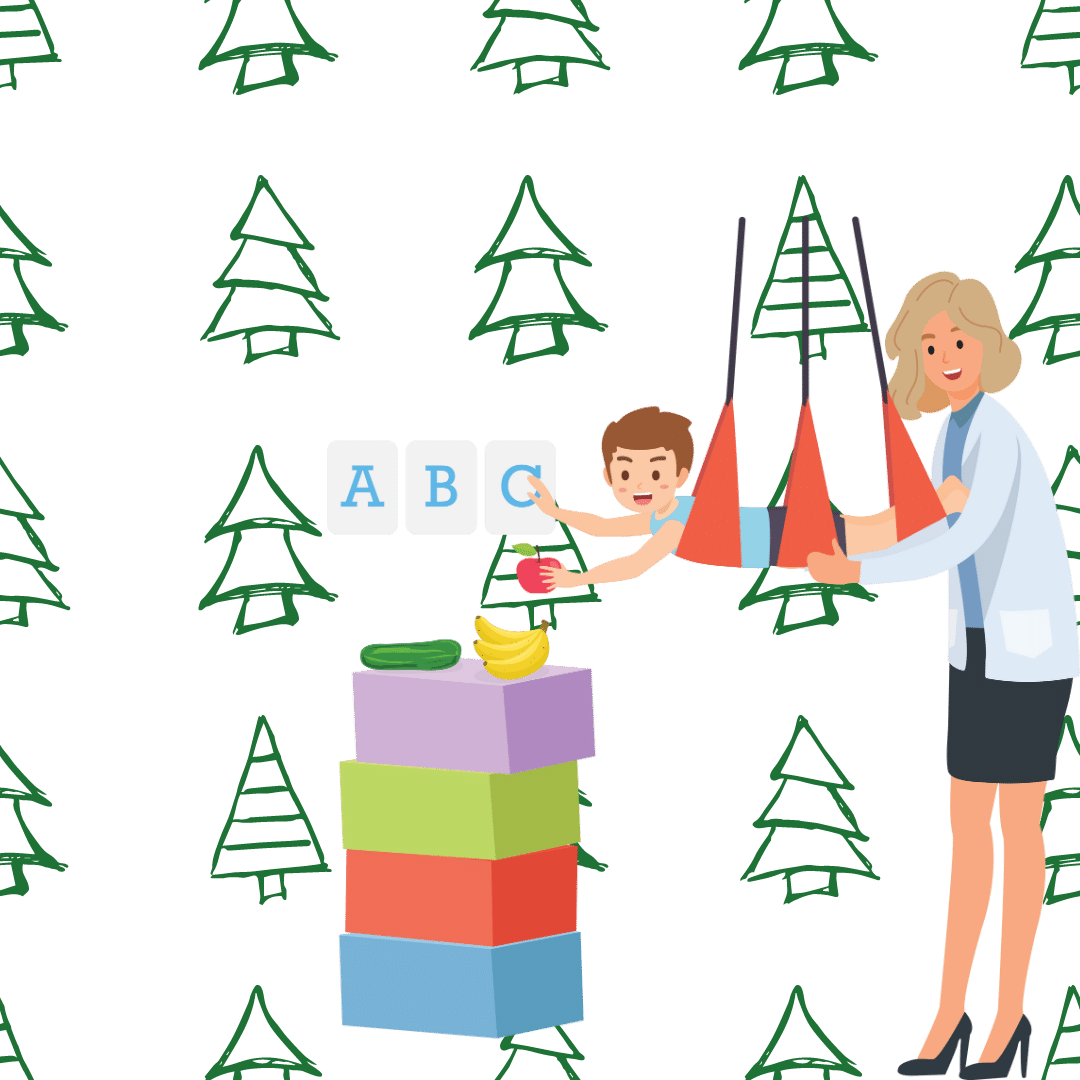Sensory Processing Around the Holidays
Christmas is a time of joy, family, friends, presents, beautiful lights, decorations, crafts, holiday gatherings, and more!
However, this season can be challenging if your child struggles with sensory processing. Taking time to prepare for an accommodate these sensory issues can make the holidays for enjoyable for both you and your child. Keep reading to discover how to help your child have the best Christmas!
Sensory Processing Recap
If you’re not familiar with sensory processing, feel free to check out our earlier posts:
Occupational Therapy for Sensory Integration
In short, sensory processing (also called sensory regulation or sensory integration) is the process of being able to take in and react to the different sensations or stimuli we experience. Everybody processes sensory input differently, which is why some children may also need help to enjoy the holidays.
Suggestions for a sensory-friendly Christmas
1. Plan.
The best way to have a sensory-friendly Christmas is to plan. Children with sensory processing challenges may not do well in loud, bright environments where they’re around many people and have to try non-preferred foods. Be aware of your child’s triggers, and don’t force them into uncomfortable situations.
To prepare for an event:
Use social stories or pictures to show your child what to expect at a family event. You can also read a Holiday book to show your child what Christmas Eve or Christmas Day looks like and what behaviors are appropriate.
Educate your guests, hosts, family, friends, etc. by letting them know if something will trigger your child, such as too much physical contact or bright lights, and tips on how to respond if your child becomes dyregulated.
Create a “break corner” for your child to have a safe place to go if they are feeling overwhelmed or just need a little time away from the party. This can be as simple as putting a blanket over a table and placing some calming toys inside their “tent” (ex. sensory fidget toys, headphones, stuffed animal, paper and crayons, etc.)
2. Decorate with care. Smells, sounds, lights.
Who says you can’t decorate your house for Christmas? You may need to introduce your child to decorations slowly. Many new things popping up at once may be overwhelming and will overstimulate your child. To help prevent this, introduce your child to decorations slowly. Try to get your child to help with decorating. Also, be aware of the number of lights, sounds, and smells you introduce. Scented candles, fresh pine needles, flashing lights, and interactive decorations are fun, but they may be too much for your child. Be aware of anything that might trigger your child.
Consider attending a sensory friendly event. May communities offer sensory friendly concerts, zoo visiting hours, and visits with Santa.
3. Make sure your child’s coping tools are available to them.
The odds are that you have a plan for when your child becomes over or under-stimulated. Make sure that those tools are available to them. If your child has a sensory diet or routine to help keep them regulated, try to stick to that as much as possible. Remember to take a break during the party or event. If your child needs extra movement, take them outside to run around, even if it’s just for a little bit. Bring a weighted vest or weighted blanket if your child needs deep pressure. Take them out in the car for a little bit to calm down. If your child has trouble understanding their body needs, remember to ask them regularly if they need anything, such as to use the restroom.
At EJ Therapy we use many strategies to help children with sensory processing concerns, such as the Zones of Regulation to help keep children aware of their feelings and to help control emotions. The Zones of Regulation is a great tool to help your child express their feelings appropriately and create a toolbox for when overwhelmed. Ask your OT for more information.
4. Prepare for meals.
Children with sensory processing challenges often struggle with meals. As a result, their diet is limited, and Christmas dinner is not a great time to experiment with trying new things unless your child wants to. If you know your child will only eat certain foods, bring a separate meal for them.
5. Presents. Wish list
Presents are so much fun, and waking up on Christmas morning to run to check what’s underneath the Christmas trees is one of the most exciting parts of the holiday, at least for children. Although, if your child gets a present that they don’t like or are not up for surprises, this may pose another challenge. To prepare for this, have your child create a Christmas wish list. Then, let any other family members or friends know what gifts would trigger your child, such as shoes that aren’t Velcro or a toy that makes loud noises.
6. Talk to your child’s OT to problem-solve.
Your child’s occupational therapist is there to help. If you aren’t sure how to prepare for the holiday, ask your child’s OT to help. They aid you in preparing a toolkit to traverse the holidays happily!
-
Cooke, Sydney-Ellen. “5 Steps to a Sensory Friendly Christmas,” Sensory Friendly Solutions, 4 October 2021, https://www.sensoryfriendly.net/how-to-make-your-christmas-sensory-friendly/.
Lester, Molly, MS OTR/L.“Sensory and the Holidays,” Associates in Pediatric Therapy, accessed 12 December 2022, https://kidtherapy.org/helpful-articles/sensory-and-the-holidays/.
“Seven ideas to help children with sensory processing challenges at Christmas,” Griffin OT, accessed 12 December 2022, https://www.griffinot.com/sensory-processing-christmas/.
“Tips For A More Successful Sensory Christmas!” Sensory Processing Disorder Parent Support, accessed 12 December 2022, https://sensoryprocessingdisorderparentsupport.com/tips-for-a-more-successful-sensory-christmas.php.







